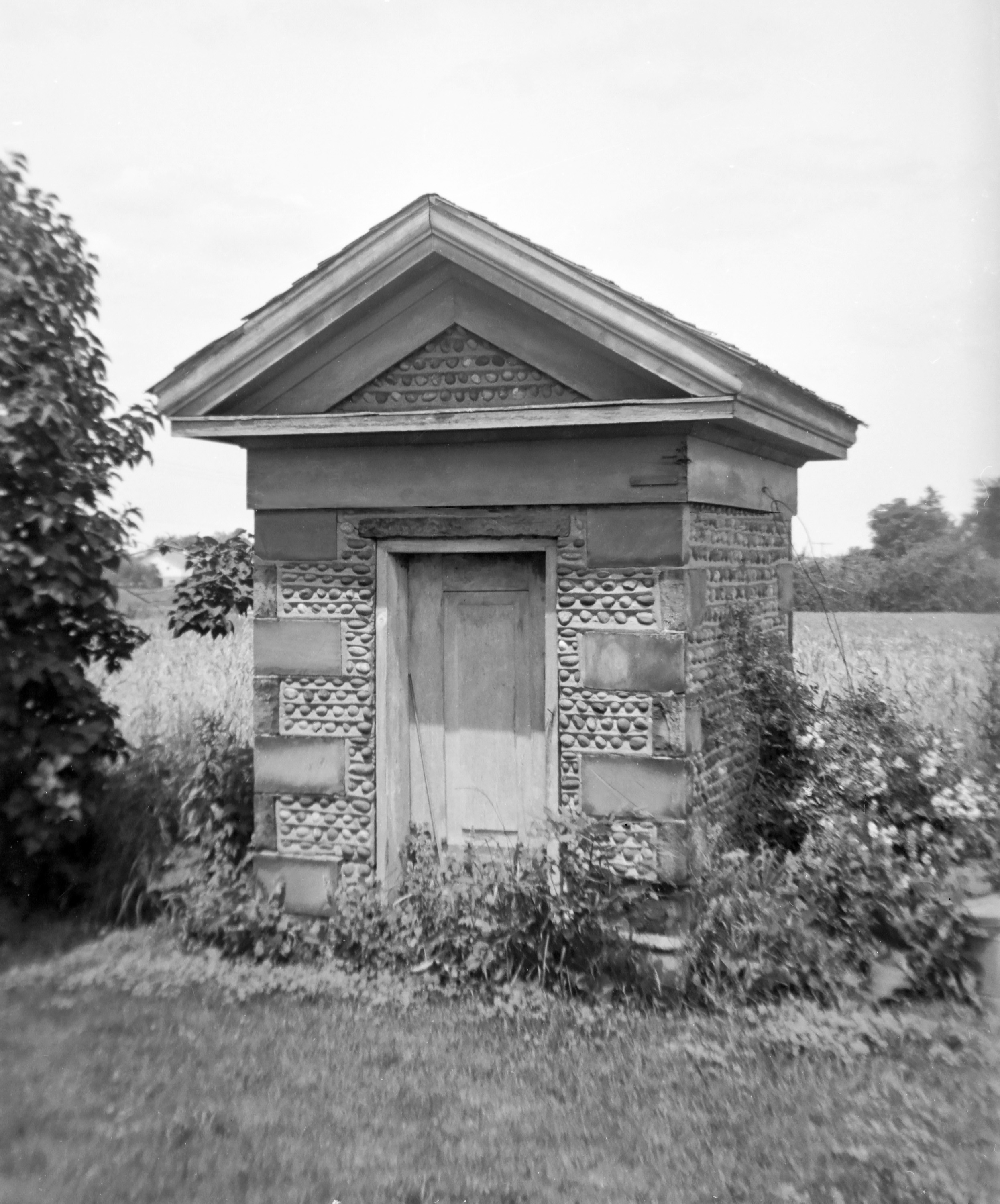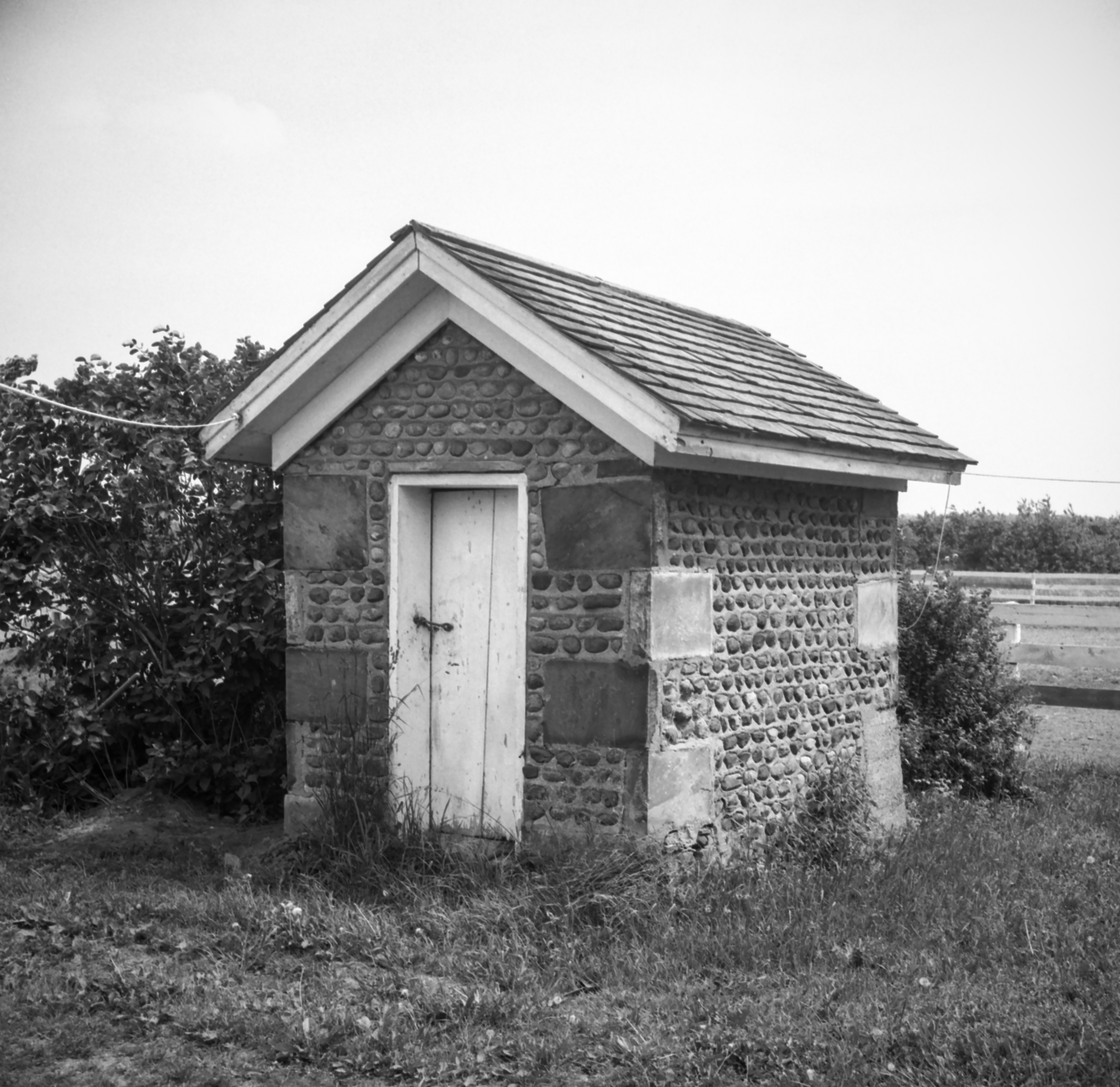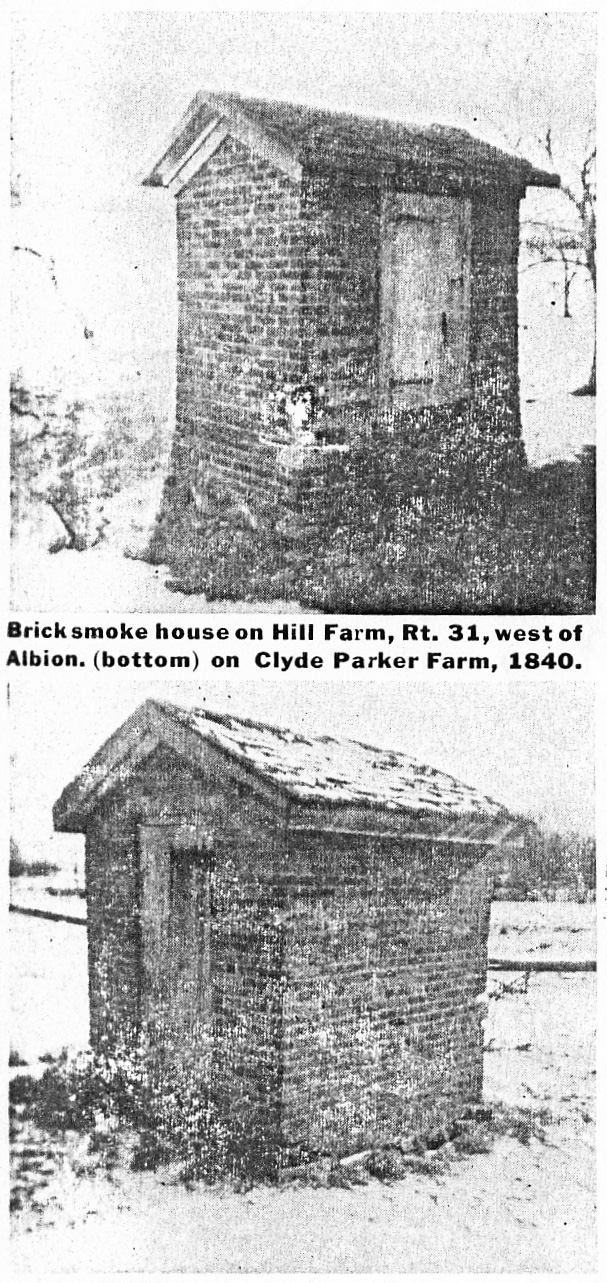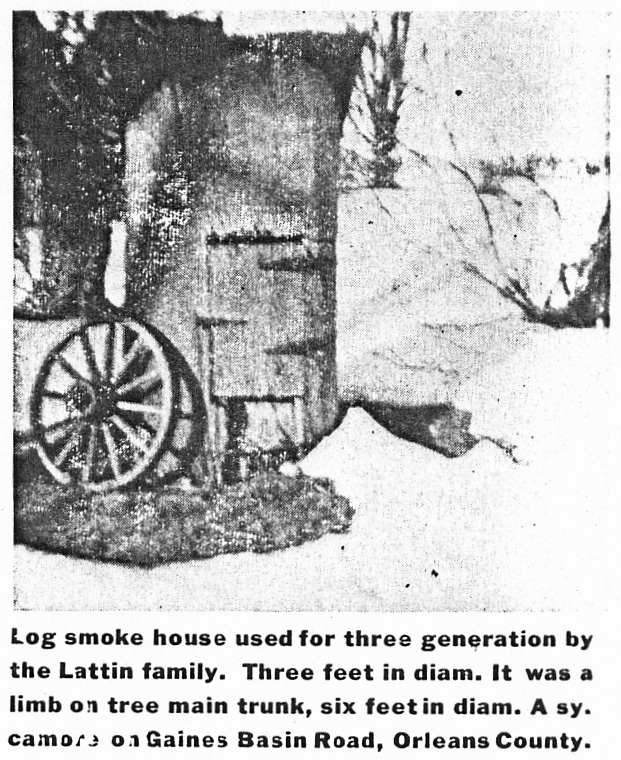

 ¹
¹ ¹
¹Correspondence Invited.
Do you know that the old-fashioned smoke house was a very important factor in the way of life of our preceding generations of Orleans County farmers? Almost each and every farmstead had a smokehouse. The majority were built of stone, either cut, field, or cobblestone. Some were built of brick, a few were made of wood, and occasionally, one made from a hollowed-out log, In past years when farmers killed and cured their own meet products, such as bacon, ham, hocks, sausage, and dried beef, a smokehouse was a necessity, not only to help cure and dry, but to flavor the meat. Various kinds of smoke were used, varying from fresh cut small maple limbs for sweetness, to hickory and corn cobs. Many of these smoke houses have disappeared from the scene. However, some are still standing and are used for storage, and some have fallen into a state of disrepair.
A smoke house that functioned properly, was to be very tightly constructed with no drafts. A large iron or stone pot was set on the ground floor in the center to hold the fire. This was usually a shovel full of live coals, over which was placed the maple, hickory, or cobs. Then the smoke fire would only smoke and not burn or blaze. The product to be smoked was hung above the smoke fire so as to absorb the pungent flavor.
Curing and preserving meat was no haphazard job in the old days. Pigs were slaughtered in the Fall or early winter, after cold weather had set in. Some farmers killed their pigs in the new of the moon, because it was believed that the meat would not shrink away while being cooked, if slaughtered while the moon was growing.
After the carcass had properly cooled for twenty-four to forty-eight hours, it was cut up. The ham, shoulders, hocks, and bacon were the choice parts to be cured in a sweet pickle and then smoked in the smoke house. The loins and spare ribs were usually eaten as fresh meat. All the trimmings, and some times a shoulder, were cut up and ground into sausage, which was packed in crocks or pans and some times stuffed into links. Properly seasoned sausage could be kept until spring if kept in a fairly cool dry place.
Side pork was cut into chunks about eight or ten inches square. To salt it and have it keep until the next summer or fall, a large crock, 20 to 30 gallons size was used, depending on the amount of pork to salt. The crock was scalded and allowed to dry and cool. Then an inch layer of packing salt was placed at the bottom. The pork was put in, in layers, and salt added between each piece of pork, as well as each layer, and thoroughly covered with salt. Then salt and pork were covered with cold, clean water, and more salt added to cover any exposed pork. The pork was was weighted down with a clean flat stone, and the crock itself, covered with a lid to keep out dust and dirt. In about six to eight weeks, the salt pork was ready to use. If stored in a cool dry cellar, the meat would keep until the next fall.
Editor's Note: Additional Resource: Albion Smokehouses Recall Tasty Era", Vanishing Americana, by Fred Powers, Democrat and Chronicle, 7/20/1961.
 |  | A very fine example of Greek Revival architecture in the cobblestone construction built in 1840s on Hartley Johns Farm at Eagle Harbor Station, Orleans County. ¹ | Cobblestone smoke house on J. D. Robinson Farm at Eagle Harbor, built circa 1839 is in excellent structural condition, Orleans County. ² |  ¹ ¹ |  ¹ ¹ |
¹ Image courtesy Cobblestone Museum.
² Photography courtesy Gerda Peterich. Cobblestone Museum.
Article transcribed from xeroxed pages on file at the Cobblestone Museum from an unknown publication, pages 29 through 34. Two original photographs from negatives were substituted for the original very low quality images in the article.